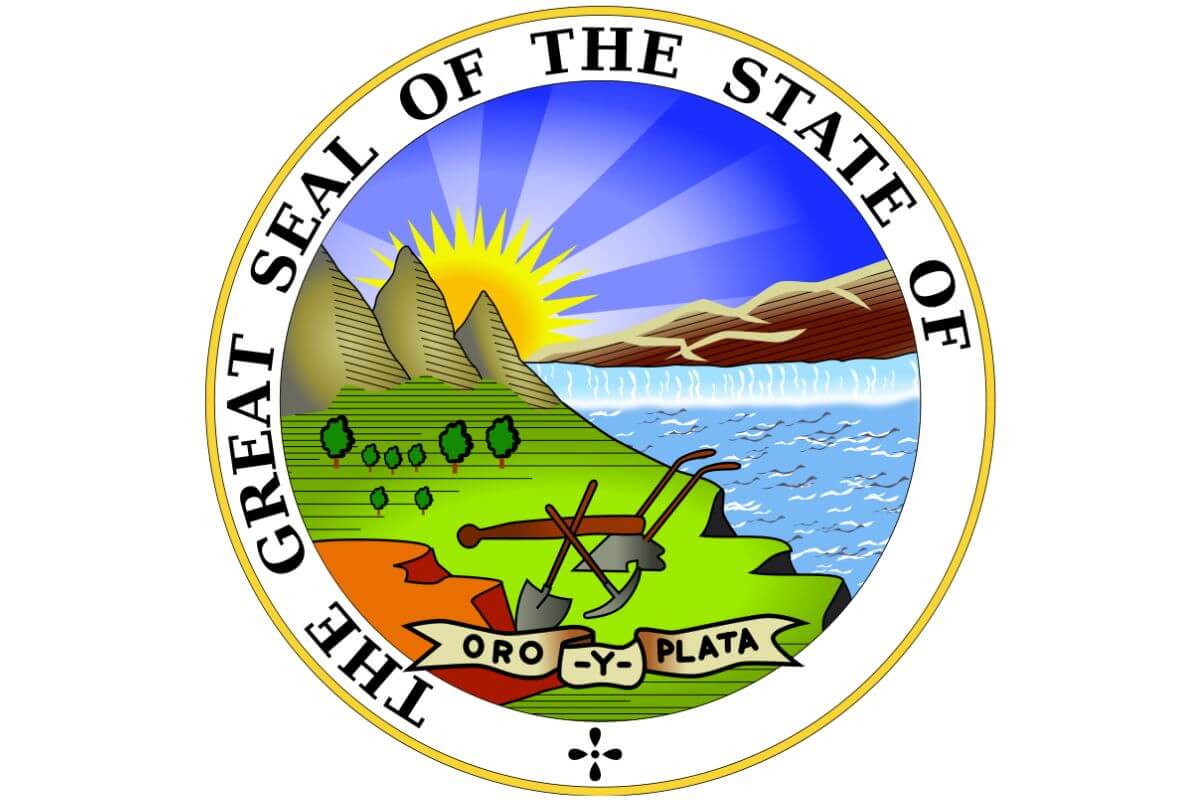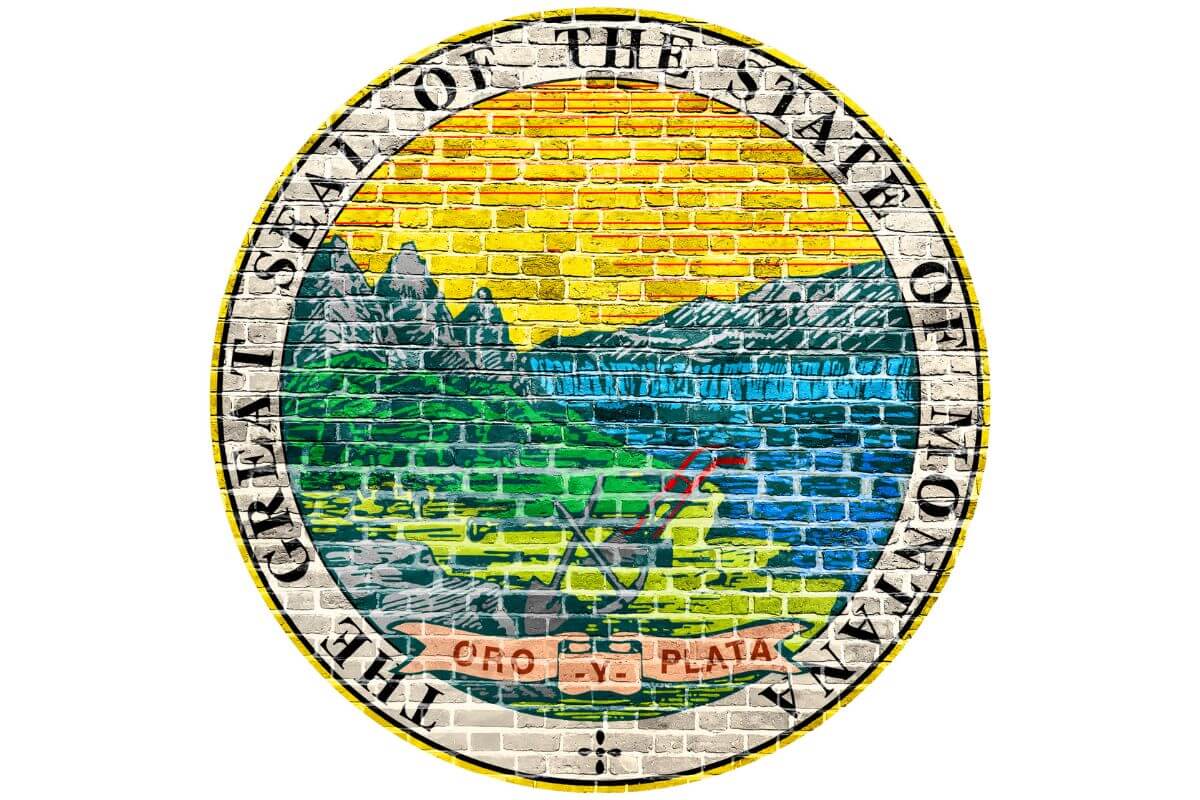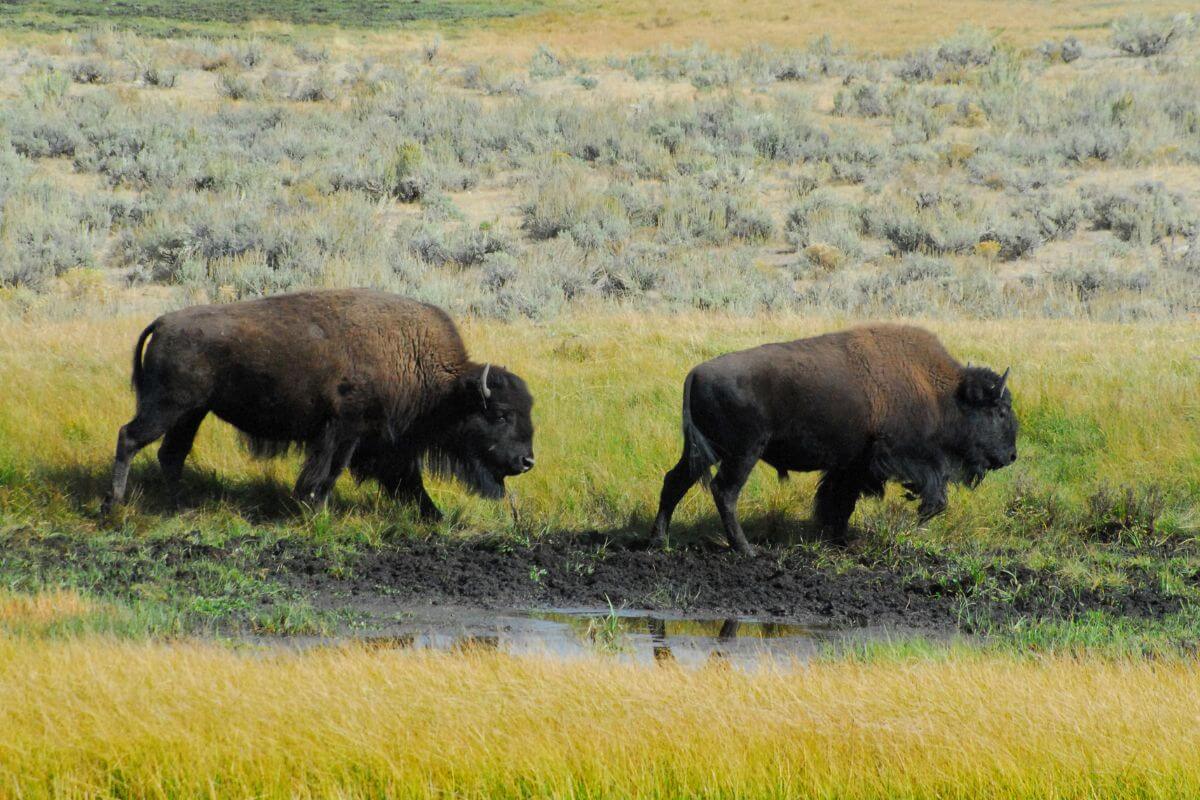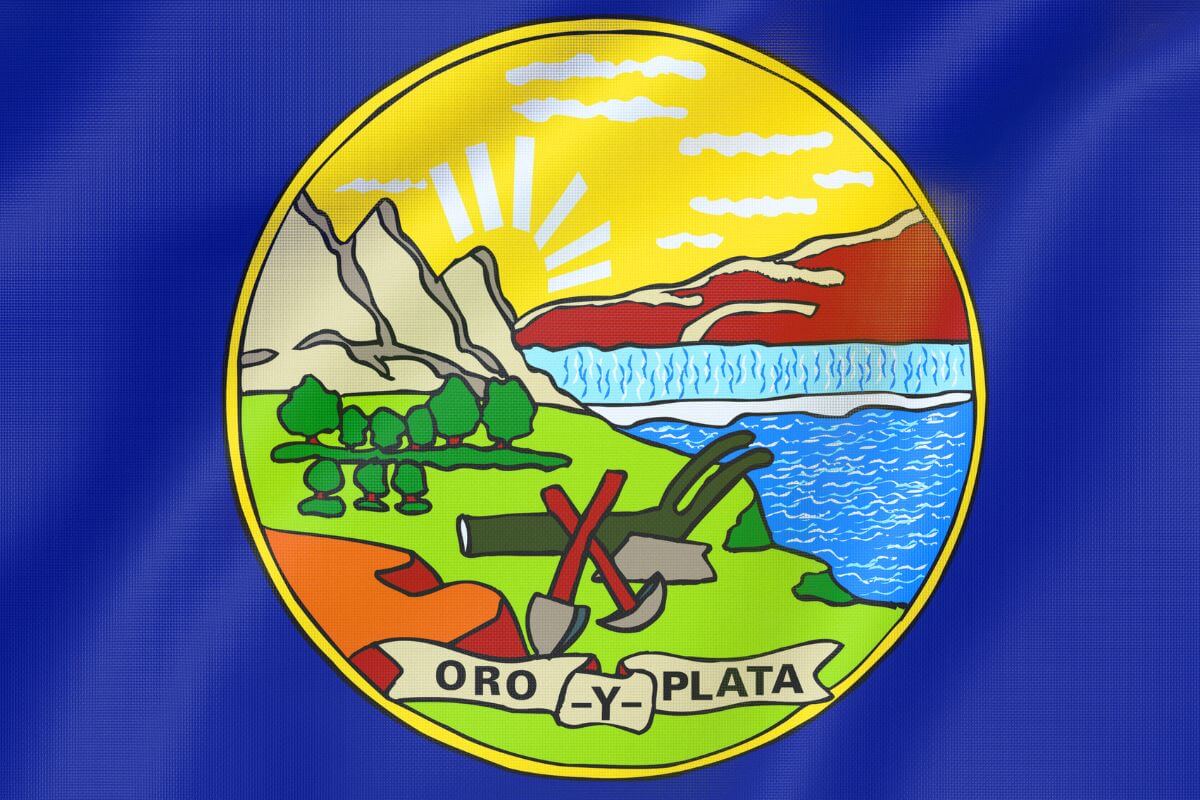Hey there, curious reader! Have you ever wondered about the hidden stories behind official state symbols?
Today, I am here to unveil the mystery and immerse you in the captivating world of the Montana State Seal, as we explore its origins and intricate design.
We’ll explore the mesmerizing tale of Francis M. Thompson, a man with a passion for creating a fitting motto for the great state of Montana.
Join me as we uncover the significance of the miner with a pick, a vivid symbol that represents the mineral wealth and historic mining districts of the state.
Get ready to be captivated by Montana’s official symbol’s image, depicting snowy mountain peaks and stunning landscapes.
We’ll delve into the artistic genius of G.R. Metten and the special committee that carefully crafted this mesmerizing design.
This article is for anyone fascinated by the rich history and symbolism of state emblems.
- Related article: Montana’s Official Icons
So, sit back, relax, and allow me to guide you through the hidden mysteries of this fascinating symbol. Let’s embark on an unforgettable journey together!
State Seals and Their Uses

A state seal serves to represent a state government’s sovereignty and authority while visually reflecting the values, heritage, and aspirations of its people.
Official state documents, from legislation to executive orders, proudly feature the emblem as a symbol of authenticity and legitimacy.
It is important to note that the use of the symbol is not without restrictions. In the case of the Montana State Seal, the guidelines set by the state legislature dictate its usage.
The Great Seal of the State of Montana is a protected symbol, and any use of it without approval is strictly prohibited.
Campaign literature and materials cannot bear the Montana State Seal unless authorized. Furthermore, it is forbidden to reproduce the emblem or create any fictitious versions of it.
Any worn or damaged emblem must be replaced promptly with an official and undamaged version to maintain the integrity of the symbol.
Any business seeking to use the Montana symbol for their materials must first obtain written approval from the Secretary of State’s office.
This ensures that the sanctity and significance of the emblem are upheld.
Montana State Seal Overview

The visual elements of the insignia paint a vivid picture of Montana’s natural beauty.
A plow, shovel, and pick symbolize the state’s deep-rooted connection to mining and farming- industries that have shaped Montana’s identity.
The majestic mountains, so synonymous with Montana, stand proudly, reminding us of the striking landscapes that grace the territory.
The sun radiates warmth and optimism, casting its golden rays over the emblem.
And in the distance, the Great Falls of the Missouri River cascade, a powerful symbol of both natural splendor and the indomitable spirit of the people.
The then territorial motto, “Oro y Plata,” meaning “Gold and Silver”, reveals Montana’s rich mineral wealth and its historical ties to mining.
You can find the state seal in various rooms within Montana’s capitol building and official state materials, underscoring its significance as a symbol of the state’s governance and authenticity.
Montana State Seal: Original Design

In February 1865, Francis McGee Thompson and his legislative committee presented a visually stunning design that captured Montana’s natural beauty for the State Seal.
Thompson possessed some expertise, having previously engraved seals on ax handles for Montana’s initial mining districts.
Today, you can find this original design preserved in the Montana Historical Society Library. Over time, there have been proposals to replace or alter the symbol, but none have succeeded.
One such debate revolved around changing the motto to “El Dorado,” a term synonymous with treasures and riches.
However, the Montana state motto “Oro y Plata,” meaning “Gold and Silver,” prevailed, honoring the state’s rich mineral wealth and historical ties to mining.
The Territorial resolution accepting Thompson’s design for the Montana State Seal was passed on February 9, 1865, and signed the same day by Territorial Governor Sidney Edgerton.
The resolution read: The Territorial seal shall as a central group represent a plow, a miner’s pick and shovel, upon the left mountain scenery, underneath as a motto the words Oro el Plata.
The seal shall be 2 inches in diameter and surrounded by these words, The Seal of the Territory of Montana.
It became the state’s first symbol, representing the indomitable spirit and rich heritage of the region.
Thanks to the Montana Historical Society Library, we can still marvel at the original design and reflect on how it has captured the essence of Montana throughout its history.
Montana State Seal: Through the Years

After Governor Sidney Edgerton signed the Montana state seal into law on February 9, 1865, several significant changes and proposals shaped its design.
Governor Edgerton’s nephew, Wilbur Fisk Sanders, was tasked with having the seal properly engraved.
In 1866, Sanders delivered the official seal, but the engraver had to make do with a simplified version, featuring a single buffalo opposite the Missouri River.
This is because Sanders had forgotten to provide details about trees and other wild animals. In 1876, the buffalo was removed and clouds were added to the design.
In 1887, recognizing the need for a fresh symbol, the Legislature authorized the creation of a replacement for the worn seal, prompting the engraver to return with a modified plate.
The mountains, clouds, and the position of the sun were altered. Interestingly, the sun began setting in the west instead of rising in the east.
The Montana state seal underwent more changes when Montana became the 41st state on November 8, 1889, and ceased being a territory.
Until 1891, the emblem was still in use until Senator Cornelius Hedges proposed a radical redesign, including elements such as a traditional pick, plow, mule train, schoolhouse, and shepherd’s crook.
However, these proposals were never adopted. In 1893, Governor John E. Rickards pushed for an official “state” seal.
The Legislature agreed to keep the old design but made amendments by deleting “Territory” and adding “State” while increasing the overall diameter to 2 1/2 inches.
G.R. Metten of J. Steimmetz Jewelry Company engraved the new symbol, making radical alterations to its design.
Despite minor liberties taken by subsequent engravers, the general form has remained largely unchanged since G.R. Metten’s design.
There were even proposals to change the state motto, “Oro y Plata,” but they did not gain serious consideration in the Legislative assemblies.
In 1956, Governor J. Hugo Aronson created a fictitious Montana State Seal for his re-election campaign, but his effort to change the seal was only in jest.
Today, the Montana State Seal remains a symbol embodying the elements Francis Thompson sketched out in 1865, altered by the liberties of G.R. Metten.
Montana State Seal Final Thoughts

State symbols are of utmost importance as they symbolize the authority and sovereignty of state governments.
They visually represent a state’s values, heritage, and aspirations, instilling a sense of authenticity and legitimacy in official state documents and materials.
The Montana State Seal holds significant meaning and design elements. It portrays the state’s natural beauty, with symbols of mining and farming connecting to its identity.
The majestic mountains and Great Falls of the Missouri River showcase Montana’s breathtaking landscapes and resilient spirit.
The state motto, “Oro y Plata”, reflects the region’s abundant mineral wealth and historical ties to mining, promising a prosperous future.
While state seals are essential symbols, they come with certain restrictions.
Unauthorized use, reproduction, or creation of fictitious versions of state seals, including the Montana State Seal, is strictly prohibited.
Each state legislature sets clear guidelines to preserve the integrity and authenticity of these cherished symbols.
Over time, state seals may undergo changes and revisions, adapting to the evolving history and identity of the state they represent.
The Montana State Seal has undergone changes and proposals in its history, but its core elements and significance have remained, reflecting the state’s unique heritage and enduring values.
As we delve into the hidden mysteries of this fascinating seal, let it continue to inspire awe and appreciation for the rich history and symbolism that it embodies.
May it forever stand as a timeless emblem of Montana’s unique identity and the enduring spirit of its people.
Montana State Seal FAQs
1. What Is the Great Seal of Montana?
The Great Seal of Montana is an official emblem used to authenticate various government documents and papers within the state. It incorporates images of a plow, a pick, and a shovel, representing significant industries in Montana.
2. What Does the Montana State Seal Represent?
The Montana State Seal reflects the state’s sovereignty, authority, and authenticity.
It also symbolizes the state’s natural beauty, mining, agriculture, and its unique identity and heritage with majestic mountains and the Great Falls of the Missouri River.
3. Who Were the Original Designers of the Montana Seal?
The original designers of the Montana State Seal were Francis McGee Thompson and his committee, who presented the design in February 1865 when Montana was still a territory.
If you want to learn more about Montana, keep your mind engaged with these articles:
- https://mhs.mt.gov/education/Textbook/Chapter1/MontanaFlagLesson.pdf?ver=2020-06-30-144230-077
- https://leg.mt.gov/bills/mca/title_0010/chapter_0010/part_0050/section_0010/0010-0010-0050-0010.html
- https://fwp.mt.gov/binaries/content/assets/fwp/montana-outdoors/2011/statesymbols.pdf
- https://sosmt.gov/state-seal/
- https://commons.wikimedia.org/wiki/File:State_seal_of_Montana

